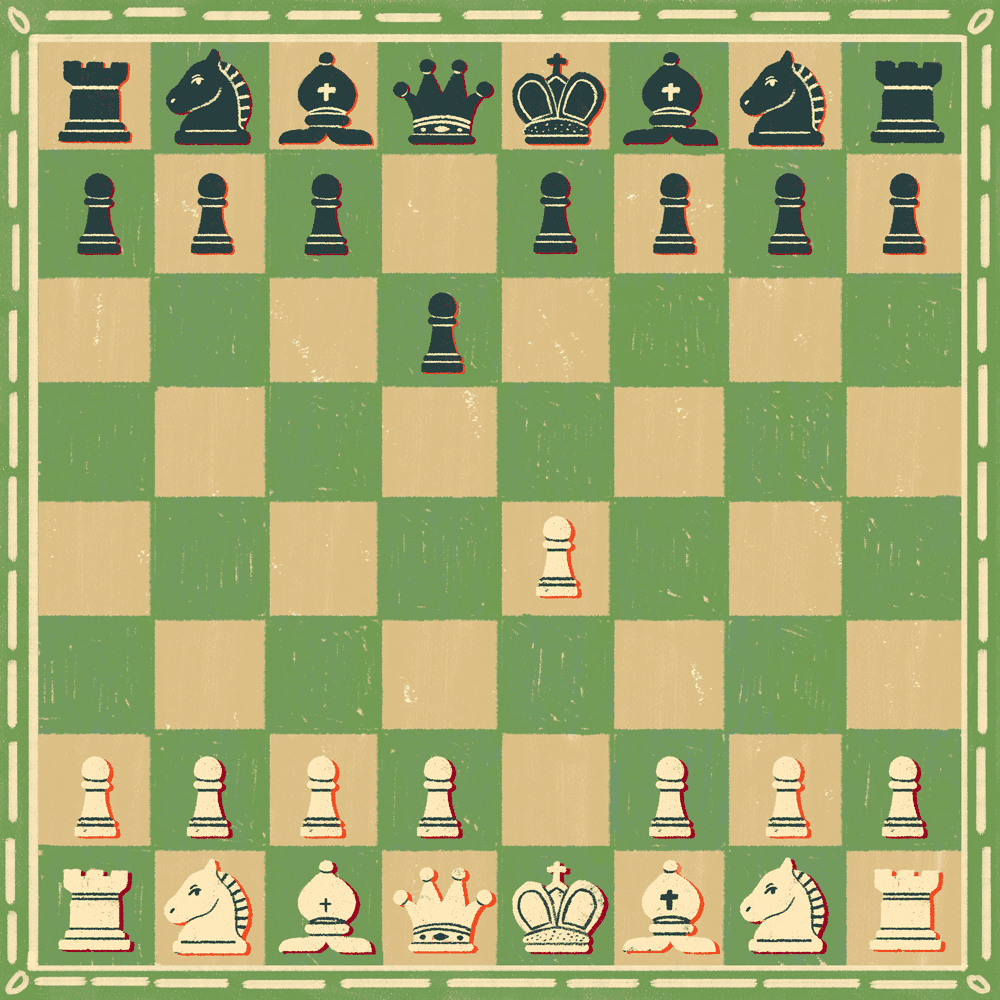Best Chess Openings For Beginners

Best chess openings – Chess has become much more famous in the past year. It all started when Chess.com had its first PogChamps tournament on Twitch in 2020. Many people liked it, mainly because famous streamers like xQc, Grandmaster Hikaru Nakamura, and Ludwig took part.
After that, the tournament got even better, and even non-Twitch celebrities like Rainn Wilson and Gregor Clegane joined in and played.
You will see notes explaining how the games in the pictures were played on the right side of each picture. If you are not familiar with chess notation, you can find a helpful guide here.
Rules for the beginning of best chess openings
Here are some important rules for the beginning of best chess openings:
- Move Your Pieces: In the start, the main thing is to get your chess pieces out and into the game. If you don’t do this, your opponent can take control of the centre and make strong moves, while you will have a tough time.
- Keep the Queen Safe: The queen is the most powerful piece, but it is not a good idea to bring it out too early. Beginners often try to use the queen immediately, but that can be a mistake. The queen should be protected, and moving it around too much initially can create problems. It is better first to get your other pieces into action.
- Do not Move the Same Piece Twice: It is not a good idea to keep moving the same chess piece repeatedly in the beginning. This makes you lose time and lets your opponent get ahead in developing their pieces. Moving one piece multiple times is not a good use of your moves.
- Do not Move Too Many Pawns: Pawns are important, but moving them too much at the start can slow down your other pieces. It is better to get your knights and bishops into action early in the game.
- Move Pieces Toward the Center: It is a good idea to think about controlling the middle of the board. If you do that, you have a better chance of winning. So, when you move your pieces, try to do it in a way that helps you take control of the central squares.
- Castle Early: Moving your king to a safe place (castling) before making ten moves is a good idea. This keeps your king safe from attacks when your opponent has their pieces ready.
- Bring the Rooks Together: At the end of the opening, you should also get your rooks close to each other. When your rooks and your well-protected king protect each other, you will be in a good position for the next part of the game.
Scotch Game
The Scotch Game is a different way to start a chess game than the well-known Ruy Lopez. What is good about it is that it lets the best chess openings for whites have a lot of space quickly, especially for their two bishops, who can move freely.
However, there’s a drawback: it can ease the pressure in the game and might make White’s e4 pawn weak later on. Despite this, it is a good choice for those who want more space early in the game and do not want to deal with all the complex strategies of Ruy Lopez.
Italian Game
The Italian Game has been around for a very long time, like from the 15th century. It is one of the oldest chess openings that people still use. When you play it, both White and Black try to control the middle part of the board.
They also make room for their bishop and queen by moving the e-pawn. They move their knights, and Black defends the e5 pawn that White wants to take.
One important move is Bc4. It does a few things: it pressures Black’s weak f7 square, helps a minor piece get into the game, controls the middle of the board, and gets White ready to castle soon.
If you are playing as Black in this situation, watch out for the move Ng5. It is when White tries to take the f7 pawn and put pressure on your queen and rook at the same time. This is called the Fried Liver Attack.
Ruy Lopez
The Ruy Lopez is a bit like the Italian Game, but with the bishop in a different spot, B5 instead of C5. Just like the Italian Game, it is a strong way to start the game because White controls the middle with their knight and pawn, and they can castle soon.
When you are playing as White and Black makes the move a6, it means you have to decide what to do with your bishop. It might seem like a good idea to take Black’s knight, which would make Black’s pawns pile up. However, generally, bishops are better than knights, so it is not the best idea.
Nimzowitsch-Larsen Attack
The Nimzowitsch-Larsen Attack is a way to start a chess game, and it is named after Bent Larsen and Aron Nimzowitsch, who liked to use it. They often began the game with the moves r 1.Nf3 2.b3 or 1.b3.
Not many people use this at the start, especially beginners, so it is a good choice for new players because their opponents might not know how to handle it.
Sicilian Defense
The Sicilian Defense is a popular way to respond when the opponent’s pawn goes to e5. Knowing how to play it as both White and Black is a good idea. However, be aware that the Sicilian Defense is tricky regarding chess strategies.
People have written whole books about it! So, if you are just starting out, it is best to stick to simple chess rules control the middle, move your pieces, and get your king safe quickly.
French Defense
The French Defense is the third most used way to respond when White moves their pawn to e4, and the second most common is when they play e5. When Black uses the French Defense, they are getting ready to play d5 in the next move.
This way, they try to take control of the centre away from White quickly. It is a good choice for Black because it often leads to more closed positions in the middle part of the game. This can be helpful when you are still learning chess or playing against someone with more experience.
Caro-Kann Defense
The Caro-Kann Defense is a chess move, and it is the fourth most common thing people do when their opponent starts with e4. It is like the French Defense, where Black also wants to play d5 soon to challenge White’s pawn in the middle.
What is good about Caro-Kann is that Black’s light-squared bishop can still move freely, unlike in the French Defense. However, it does mean that Black cannot easily put their knight on the c6 square.
Scholar’s Mate
Scholar’s Mate is not a great way to start a chess game if you want to get better, but it is important to know so you do not lose quickly. In this position, the White has won the game because the Black king cannot run away from the White queen, and the White bishop stops the Black from taking it.
Queen’s Gambit
The Queen’s Gambit is an opening in chess that new players might want to learn, especially if they have seen the TV show with the same name. It might look strange because Black can take White’s pawn on c4 without consequences.
However, White has a plan to win the pawn back. They often play e3, which allows their bishop to capture Black’s pawn. Black can try to defend the pawn, but it can put them in an awkward position.
King’s Indian Defense
The King’s Indian Defense is something people often do when White moves their pawns to d4 and c4. Black plans to move their pawn to g7 soon so they can castle and get their pieces into the middle without using too many pawns.
This way, both players can start getting their smaller pieces into the game easily and cast within the first ten moves without any problems.
London System
The London System is a common choice for new players because it helps White safely bring out their pieces and get a strong position for the middle part of the game. A common move for White is to play e3 in the next turn.
This move protects White’s dark-squared bishop and makes way for the light-squared bishop to develop so White can castle kingside.
King’s Indian Attack
The King’s Indian Attack is a good opening for beginners because it is easy to understand, helps White’s King stay safe, and is not very complicated, unlike many other e4 openings.
The King’s Indian Attack is like the King’s Indian Defense, but White has a small advantage. It has similar benefits, as White aims to control the centre, develop pieces, and can castle soon after moving the light-squared bishop to g2.




